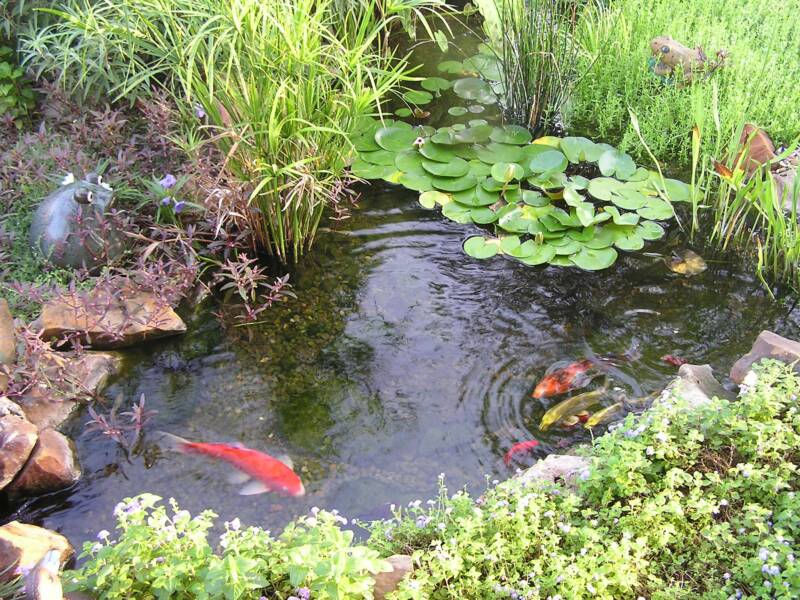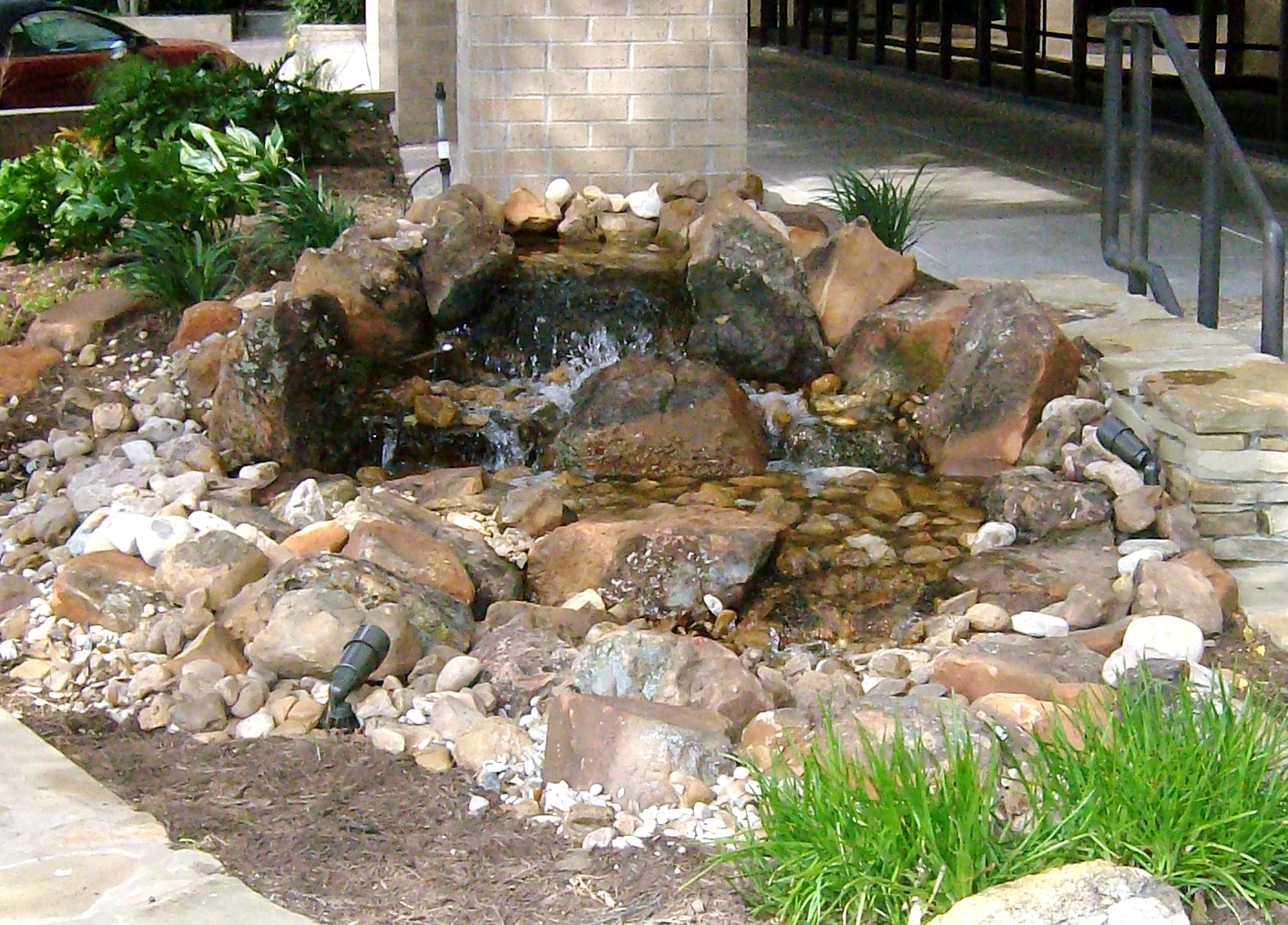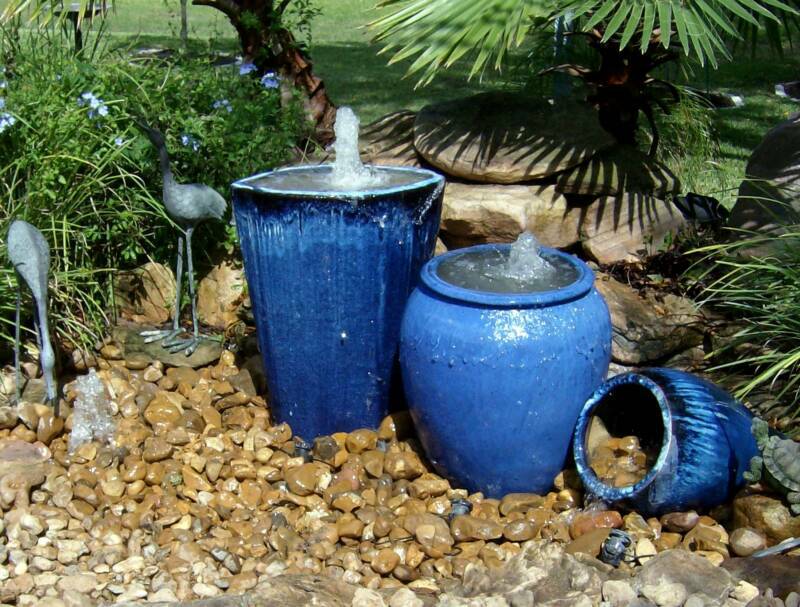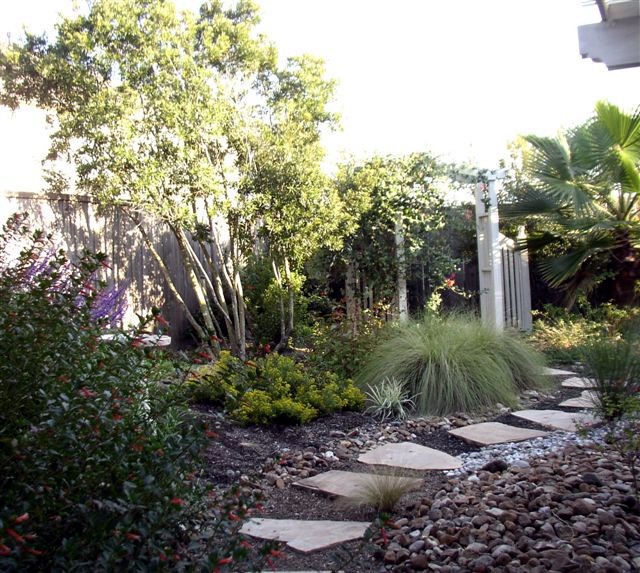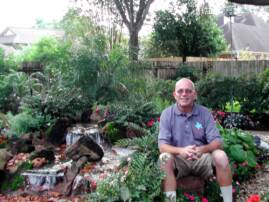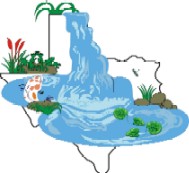


Rainwater Harvesting
Organic Ecosystem Ponds
Pondless Waterfalls
Urn and Fountain Features
Water-Wise Landscapes
Meet Your Water Feature Professionals


Texas Ponds and
Water Features
The Organic Water Gardening ‘Controversy’
by Matt Boring
The Natural Water Gardener
So you’d like a pond in your life and you’ve decided to do a little research before plunging in headfirst, so to speak. But the more you read about the subject, the more confused you get. One source says to use a UV filter and another says you shouldn’t. One source says you should have rocks and gravel in your pond and another says that doing so would make a terrible mess. One book says to use a biological filter and another makes no mention of one. Some say that you’ll have to monitor and adjust your pH and others say you won’t. How are you, the novice ponderer, supposed to make sense of all these contradictions (and many more) and decide how your little slice of paradise should be constructed and filtered? Even worse, all the contradictory advice was from ‘professionals’. Which one is right? They can’t all be right can they? Well, yes and no. Confused yet?
You see, for many years equipment manufacturers (and therefore their customers) in the water gardening industry have evolved from two primary sources. Namely ...1) the water filtration orientation (the wastewater treatment mentality) and ...2) the chemical sterilization orientation (the swimming pool design mentality).
The water filtration types jumped into the water gardening industry thinking that the pond business is basically a matter of cleaning up dirty water. If you were in the bottled water market, or even the sewage disposal market, you’d be absolutely right. But in the pond business, you’d be a bit misguided at best.
The primary focus of this group, right from the beginning, was to filter more and more junk out of the water (presumably eliminating Whatever was making the pond dirty), and in the process to bring the public a cleaner and clearer pond. This group presumed that whoever built the best filter would have the upper hand in the water gardening community. That was, and still is, one predominant orientation in water gardening.
The swimming pool design/sterilization types took a different approach. Their strategy, predictable enough, was to add chemicals to the pond water to sterilize it. Where do you think UV sterilizer ‘filters’ and pond chemicals came from? If you guessed ‘from the swimming pool orientation’ then your dog is on the right track.
The primary focus of this group (as dictated by their background concepts) was to create a sterile (and chemically dependant) pond. They presumed that whoever developed the most effective chemical sterilization process would have the upper hand in the water gardening community. That’s the second predominant orientation in water gardening.
The third approach to water gardening aims to work in harmony with Mother Nature by creating a balanced ecosystem and it’s the latest in water gardening’s evolutionary history. It brings an organic, holistic, naturalistic orientation to the ponding community. The organic water gardener brings this naturalistic orientation home to friends and neighbors around the world.
When I built my first pond in Austin, TX many years ago, I was not an engineer looking to filter dirty water. I was not trying to build a swimming pool for fish. I was just a guy who enjoyed the relaxing sound of moving water at the end of a busy day, and I didn’t want to come home after work and do more work in the pond each day. When I set out to build ponds for other people, I wanted to build water gardens that were...
– natural looking, and that people would enjoy,
– a good home for plants and fish,
– not going to saddle the owner with a lot of headaches and maintenance.
Notice that there’s nothing about filtering or sterilizing water in any of this. However, it’s precisely what is now being called “the third paradigm”. It represents a new set of eyes, an ‘outside the box’, or ‘renegade’ perspective on water gardening.
Part of the recipe of the organic orientation is having natural rocks and gravel covering the entire liner. Not only does it look much better, it serves several other functions as well. Opponents of organic water gardening will tell you that rocks and gravel would make it difficult to clean out the 6-8 inches of muck that builds up in the pond bottom each year. What they fail to understand, or tell you, is that it’s precisely because of the rocks and gravel that the natural ponds do not accumulate sludge the way ponds without rocks and gravel do. I perform yearly clean-outs for many of my pond customers and typically, there is no more than 1/8 to 1/4 inch of build up in any part of the water garden.
I’ll explain how this works in a bit. What you need to understand is that we’re not just adding rocks to an old system and expecting it to suddenly work differently. This is a whole new ball game with new rules. Many owners of older pond systems don’t understand how it works, so they will never agree with us that it does indeed work. Before I go further I want to say that this is not the only system that works. Older systems generally function in the manner that they were intended to. Ours just works differently, in a way that makes them nearly self-maintaining, which leaves us more time to enjoy the fish and beautiful blooming aquatic plants in our backyard get-away’s.
Very simply, it works like this. A skimmer is buried in the ground at the side of the pond, constantly skimming the top 1/4 inch surface of the water for any debris that falls in. The debris is collected in a basket for easy removal. This generally requires emptying only when leaves are dropping, and the wet leaves can be dumped at the base of nearby plants or in the compost pile. The pump sits in the skimmer for easy access and where it’s protected from clogging. The water is pumped through flexible PVC pipe around the pond to the biological filter, which contains the filter media that provides surface area for billions of beneficial bacteria to colonize. The biological filter is totally hidden within the waterfall and only requires cleaning once a year. There is no bulky filter sitting next to your pond. The waterfall returns the filtered water to the pond.
The liner is covered with small stacked boulders on the vertical walls and gravel on the horizontal surfaces. The gravel provides large amounts of surface area which, unlike bare liner, is suitable for the colonization of beneficial bacteria. The bacteria break down fish waste, preventing sludge build-up, as well as consuming excess nutrients in the pond water that could feed algae. The more bacteria working for you, the less chance you have of algae blooms occurring.
Most of the aquatic plants are planted directly into the gravel substrate of the pond and allowed to root out into the gravel. I don’t fertilize the plants. This forces them to take the nutrients they need to survive directly from the pond’s water. Plants will use an enormous amount of available nutrients if their roots are unconstrained by pots. And the more nutrients the plants extract from the water, the fewer nutrients will be available for potential algae to use. The plants will also perform and bloom better for you when not containerized.
Rocks and gravel also help hold down the liner, protect it from UV rays, and make your pond look much more natural than your average garden pond.
I’ve given you a little historical perspective so you have some sense of where this organic orientation to water gardening has come from. And with this historical perspective in hand, you now have a context within which to accurately evaluate various, often contradictory, claims within the dynamic, but often confusing, water gardening world.
Wouldn’t it be nice to walk out on your patio or deck and hear the sound of water gurgling, look into your sparkling clear water to see your colorful Koi, Comets and Goldfish darting among the aquatic plants, never once thinking of maintaining the system? When you let nature take care of your pond, you don’t have to. A pond that takes an average of five to ten minutes every other week to maintain means that you own the pond, it does not own you. It is my suggestion that you play the water gardening game in harmony with Mother Nature, and win your freedom to relax, to decompress, and to enjoy water gardening the way it was meant to be enjoyed.

